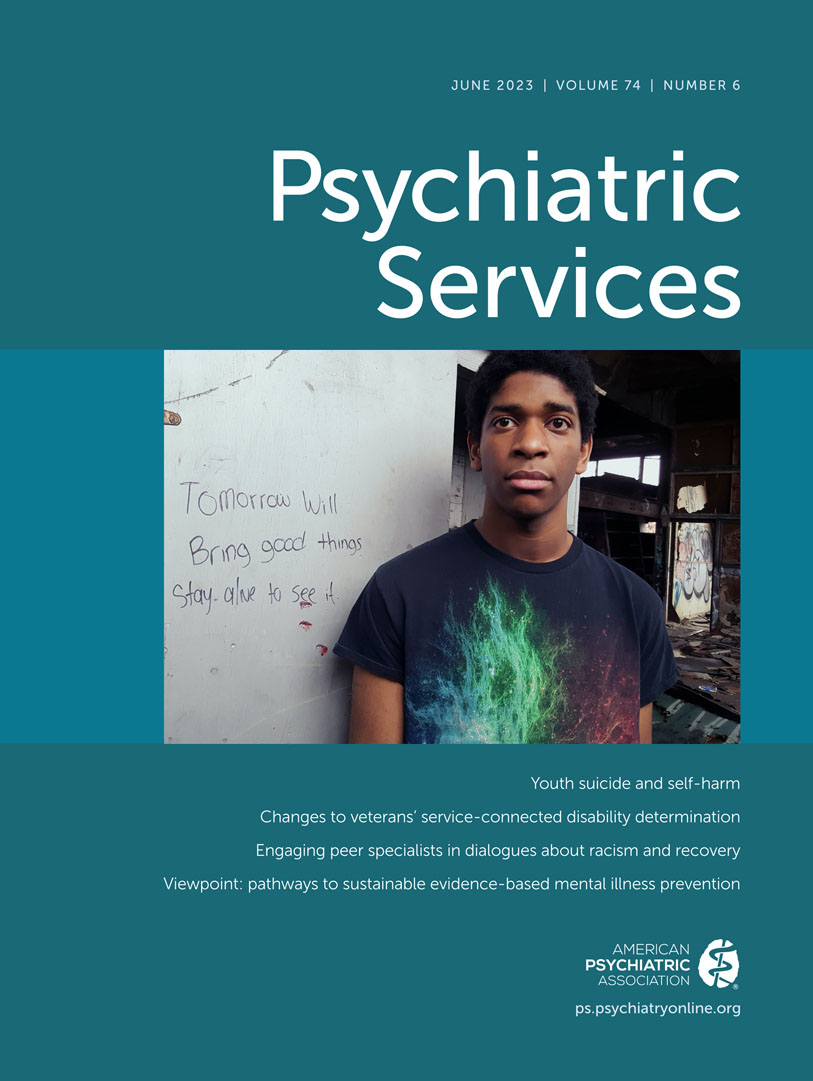Service Dogs for Veterans With PTSD
TO THE EDITOR: The clinical trial by Richerson and colleagues (1) comparing service dogs and emotional support dogs for veterans with posttraumatic stress disorder (PTSD) represents an important step in investigating novel treatments for PTSD. The authors are to be commended for successfully completing this challenging study. However, we are concerned that the published article incorrectly communicates that service dogs are an effective treatment for veterans with PTSD by not reporting a finding from the trial that raises significant concerns about the validity of the findings.
The authors found that service dogs had no benefit on any of the three primary outcomes but were associated with greater improvements on two of the five secondary clinical outcomes, self-reported PTSD on the PTSD Checklist for DSM-5 (PCL-5) and suicidality. Readers should be cautioned in interpreting these findings given the lack of differences on the primary outcomes. Although the authors appropriately downplayed the findings on suicidality, both the study Highlights and Discussion sections emphasize the PTSD finding, even though it was not clinically significant. The estimated difference between groups on the PCL-5 was 3.69 points, which is only 4.6% of the scale’s range of 0–80 (2).
Beyond its lack of clinical significance, the PCL-5 finding was not corroborated by analyses referred to, but not reported, in the article. In addition to measuring PTSD by using the PCL-5, the authors also used the Clinician-Administered PTSD Scale for DSM-5 (CAPS-5) (3), considered the gold standard for assessing PTSD, at baseline and at 15 months. The authors mentioned the CAPS-5 in the Discussion section, noting that the two study groups did not differ in the percentage of participants who no longer met criteria for PTSD, but did not report these and additional CAPS-5 analyses in the article’s results. According to a report available online (4), there was no difference in CAPS-5 scores between the service dog and emotional support dog groups at 15 months or in amount of change from baseline to 15 months. From that report, we estimate that the difference between groups in change was only 1.65 points, or 2.1% of the 0–80 scale. Like the PCL-5 finding, this is not a clinically significant difference.
Independent clinician assessment is critical for studies such as Richerson et al.’s (1), in which placebo effects are especially likely given the novelty of the intervention and inability to blind patients to treatment condition. Such assessment does not eliminate bias but can help to reduce it. In the present case, the fact that the CAPS-5 did not show service dogs to be beneficial for reducing PTSD symptoms should have been reported fully and not merely mentioned in the Discussion section. Complete reporting is necessary to help readers interpret the statistically significant findings for self-reported PTSD symptoms.
We disagree with Richerson et al.’s (1) conclusion that the PCL-5 findings, along with an increase in antidepressant medication refills in the service dog group, warrant further study. There are effective treatments for PTSD (5). Although developing ways to make treatment more effective for veterans and others living with PTSD is a priority, this study does not suggest that service dogs are a promising strategy.
1. : Therapeutic and economic benefits of service dogs versus emotional support dogs for veterans with PTSD. Psychiatr Serv (online ahead of print Jan 31, 2023)Google Scholar
2. : Psychometric properties of the PTSD Checklist for Diagnostic and Statistical Manual of Mental Disorders—Fifth Edition (PCL-5) in veterans. Psychol Assess 2016; 28:1379–1391Crossref, Medline, Google Scholar
3. : The clinician-administered PTSD scale for DSM-5 (CAPS-5): development and initial psychometric evaluation in military veterans. Psychol Assess 2018; 30:383–395Crossref, Medline, Google Scholar
4. : A Randomized Trial of Differential Effectiveness of Service Dog Pairing Versus Emotional Support Dog Pairing to Improve Quality of Life for Veterans With PTSD. Washington, DC, Office of Research and Development, Department of Veterans Affairs, 2020. https://www.research.va.gov/REPORT-Study-of-Costs-and-Benefits-Associated-with-the-Use-of-Service-Dogs-Monograph1.pdfGoogle Scholar
5. : A guide to guidelines for the treatment of posttraumatic stress disorder in adults: an update. Psychotherapy 2019; 56:359–373Crossref, Medline, Google Scholar



